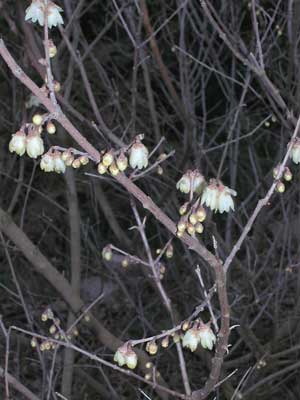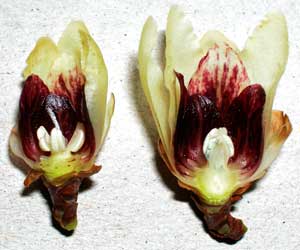
Calycanthaceae
Heimat: China.
Diese strauchig wachsende Pflanze ist in Gebirgswäldern Chinas natürlich verbreitet, wird darüber hinaus aber auch in vielen Gegenden kultiviert. Die äußerlich hellgelben und stark duftenden Blüten erscheinen vor den Blättern.
Stammesgeschichtlich wird die Familie als verhältnismäßig ursprünglich angesehen. Die Knospenschuppen gehen in die hellgelben 'Kelchblätter' und die weinrot gefärbten 'Kronblätter' über. Auf den weinroten Blütenblättern befinden sich zahlreiche Nektartropfen.

Die Blüten werden wohl durch Käfer bestäubt.
Zu sehen in der Waldanlage (06.02.2004, M.H.H.)